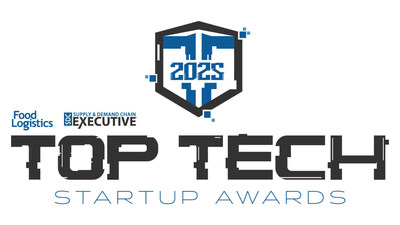Intetics Inc. an Expert Opinion on AI for Educational Institutions: Main Application Areas, the Current and Future Market, Industry Resources
Press Releases
Nov 08, 2021
NAPLES, Fla., Nov. 8, 2021 /PRNewswire-PRWeb/ — There has been plenty of publicity on how AI is transforming the EdTech landscape – however, media tends to focus on applications that are student- or instructor-focused. For instance, virtual teaching assistants and AI tutors are the most well-known applications.
While these technologies are certainly poised to enhance learning and reduce the overwhelming workload of teachers, there is another kind of AI application often overlooked: institution-focused. While not as flashy as other educational tools, institutional AI is doing the quiet but important jobs of student data processing, teacher evaluations, and more. Let’s take a look at how school districts are evolving through the use of AI.
What Is Institution-Facing AI?
Institution-facing AI (sometimes referred to as system-facing AI) helps school districts and administrators streamline the admission process, organize timetables, predict inspection performance, and see biases in big data sets. Essentially, in this genre, AI is being used as a research and organizational tool for education processes. Out of the three kinds of AI EdTech (student, learner, and institution), it is the least widespread.
Application 1: Student Enrollment
Even before COVID-19, there were predictions of a steep decline in university enrollment – and the ongoing pandemic has made the situation even more dire. Higher educational institutions are scrambling to increase their student enrollment, retention, and re-enrollment. The latter is particularly important, as up to 40% of undergraduate students end up dropping out. Colleges are desperate to reinstate these students, and this difficult task could be made more manageable by AI.
We can see this demonstrated by ReUp Education, an initiative that used AI to re-enroll over 8,000 students in Spring of 2019. The firm’s AI platform brought 30 universities approximately $25 million worth of tuition. But how?
ReUp used predictive modeling to determine which students to reach out to and how to make the most impact during communications. They used this modeling to predict key student behaviors, enabling them to prioritize outreach, personalize support, and forecast results. Using this strength-based approach, ReUp was able to outreach to students who were highly likely to engage in coaching, re-enroll in school, and remain in school once back.
Application 2: Attendance Patterns and Monitoring
Artificial Intelligence can be used to boost attendance – both through monitoring students and by identifying absence patterns. Take, for example, when the Institute of AI analyzed Willen Primary School’s attendance data.
By using AI models, researchers were able to identify attendance “problem areas,” which was Monday mornings. The school was able to implement measures to boost attendance on Mondays: a “Monday Matters” initiative introduced fun activities for students each week. Now, the researchers from this project are developing an AI absenteeism diagnostic tool that UK schools will be able to download. When it’s released, schools can upload attendance data and gain AI-enabled insights.
Thanks to the Institute of AI, the school was able to achieve the required national attendance rate of 96% for the first time in 4 years. Furthermore, their persistent absenteeism decreased significantly – a 55% improvement compared to the prior year.
But AI can be applied to attendance in another way: facial recognition. Rather than teachers spending valuable teaching time on attendance each day (or each class, for high school and university teachers), it is done through an AI-powered solution. For instance, Smart Attendance uses Machine Learning and Computer Vision algorithms to mark the students’ attendance. The teacher just has to take a picture of the classroom, making sure everybody’s face is visible. The input is processed through the AIndra Engine, and then students are marked as present or absent.
This is particularly useful in college classes, where a certain number of absences may lower a student’s grade in the class or cause them to be dropped from the class altogether. Such classes often rely on sign-up sheets, which are easy to spoof. But with facial recognition, teachers will have a much better idea of who actually attended lectures.
Application 3: Predicting Student Outcomes
The heart of any educational institution is to improve student outcomes – and institutional data can now be used to intelligently pinpoint learning gaps and identify at-risk students.
Nowadays, educational institutions have huge student data sets at their fingertips, and they’re growing larger each day. AI student information systems enable school districts to manage data for each student and generate insights based on factors like attendance levels, gender, ethnicity, parental engagement, and more. By using machine learning and AI to study the past and predict the future, educators get a deeper, data-driven understanding of student behavior. Rather than doing too little too late, educators now have a chance to:
- Identify at-risk students that need intervention
- Predict which students will pass exams and which ones need extra support
- Pinpoint gaps in an individual student’s learning
- Adapt content and teaching style to improve each student’s learning experience
Application 4: Curriculum Mapping
Curriculum mapping ensures that education is logically sequenced across grade levels. Essentially, it ensures that all teachers are working towards the same learning goals and that students can move from one grade to another without any gaps of knowledge, regardless of which teacher they had.
Typically, curriculum mapping is extremely time-consuming, research-intensive, and requires a team of administrators and teachers working in conjunction. The full district curriculum map must be in compliance with the State’s standards – and whenever a State changes its learning standards, the map must also be updated.
Although AI-powered curriculum mapping is not yet widely used, it has the potential to make the process much simpler – without sacrificing learner objectives. Not only could AI-powered educational tools create a curriculum, but they could also assess the effectiveness of current maps. With traditional curriculum mapping, the district must first gather data on what is being taught – and, as we’ve already addressed, AI is an excellent gatherer of student information. That information can be compared to the State’s Common Core learning standards, and gaps in knowledge can be identified (again, through AI).
Final Thoughts
Artificial intelligence has huge potential to increase an institution’s student outcomes – students will be on equal footing, no matter who their teacher is or what their background consists of. AI systems can flag students who are at risk, so educators can provide them with additional support. The curriculum will be the same from teacher to teacher, so there is no learning gap between the two classrooms. And, due to strides in AI attendance monitoring, there will be less persistent absenteeism, leading to an increase in learning hours. While institution-facing AI might be behind learner and teacher-facing applications, it still has the power to change the educational system for the better.
Find out more use cases on EdTech in the Intetics’s White Paper.
Media Contact
Nadin Krukovskaya, Intetics Inc., +1 12392174907, [email protected]
Irina Dubovik, Intetics Inc., +1 (239) 217-4907, [email protected]
SOURCE Intetics Inc.



